Welcome to our comprehensive dwarf hamster care guide! We’ll cover everything you need to know to keep a dwarf hamster happy and healthy in your home.
We created this site to help every hamster owner create a healthy and loving home for their pet. We have tonnes of hamster care guides, tips and advice so feel free to browse our blog for all the hamster info you could ever need!
Below you’ll see that we’ve covered every topic required to become a successful hamster owner, from the different hamster species to handling and taming tips.
Dwarf hamsters are great little pets and can be very rewarding to keep. Let’s take a closer look at how to care for these animals in captivity.
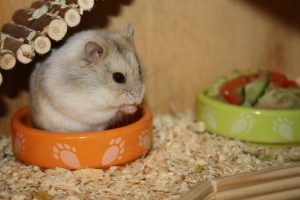
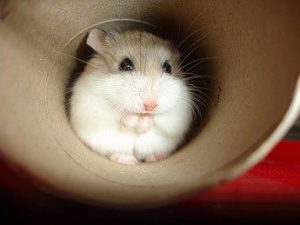
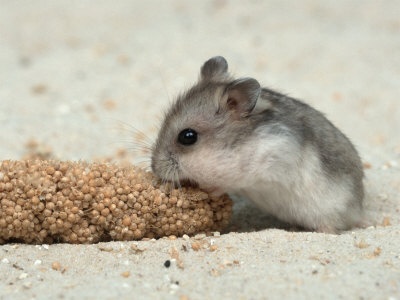
Choosing The Right Dwarf Hamster For You
There are a few different species of hamster that you’ll come across in the local pet store. We have a more detailed guide on the types of dwarf hamster, but here are the basics.
Campbell’s Dwarf Hamster
Campbell’s hamsters are probably the most common dwarf species that you’ll find in the pet store. These animals are now available in a wide range of colors thanks to selective breeding and are usually very sociable.
You can keep Campbell’s hamsters in small groups and they can be tamed without too much trouble. Be sure to keep these fast runners healthy with a good running wheel and plenty of toys to play with
Winter White Dwarf Hamster
Winter White hamsters are also sociable and live in small groups. They can be interesting little pets and originate from areas that become covered in snow during the winter – hence the name! Two other common names for this species are ‘Siberian hamster’ and ‘Siberian dwarf’.
Winter Whites tend to be louder than the other hamsters on this list, constantly squeaking and chattering with each other which can be quite entertaining to watch. Winter White’s are slightly less easy to tame compared to their Campbell’s cousins but it’s still far easier than taming a Robo!
Roborovski Dwarf Hamster
Robos are the smallest and the quickest of the fours breeds! These tiny creatures are only around 3 inches in length and this agility is what makes them quite hard to handle. If your Roborovski hamster escapes, good luck catching it!
This is more of a pet to observe than one to regularly handle, this means it may not be ideal for children. Robos are also now available in a range of different colors and can be housed in small groups.
Tip: Make sure the bar spacing on your hamster cage is minimal when housing Robos, they can squeeze their way out of almost everywhere!
Chinese Hamster
Chinese hamsters aren’t actually true dwarf hamsters. They are often grouped together with dwarfs due to their similar care requirements and size so we’ll include them on this list. They are the only hamster that has a tail!
Chinese hamsters can sometimes be a little hard to find in pet stores but they do make amazing pets. The Chinese hamster has a distinctively long body that’s useful for climbing. Overall they are curious creatures who like to play and explore!
Word Of Warning: People have reported mixed success when housing Chinese hamsters together. Some say that a group of males get along much better than a group of females – it really comes down to the personality of your individual hamsters.
So What Are Russian Dwarf Hamsters?
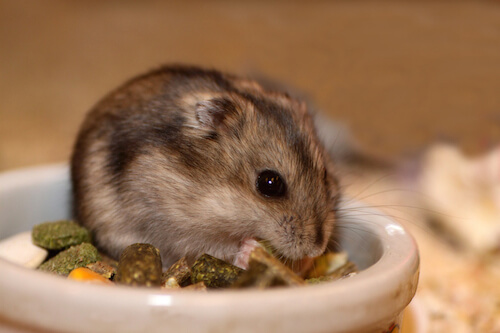
The term ‘Russian dwarf hamster’ can be used to describe Campbell’s, Winter Whites and Roborovski hamsters collectively. It’s a less accurate name that’s usually used in pet stores to avoid confusing customers with all the different breeds.
Of course, your other option is the Syrian hamster. This isn’t a dwarf species but they can still definitely be rewarding pets. Syrian’s tend to be a little less active and must live alone; their main upside is ease of handling.
Useful Fact: All hamsters have poor eyesight but they do have much more developed hearing and smelling senses to make up for it. That’s why getting your hamster used to your scent makes handling and taming so much easier.
Breed Overview
| Species | Scientific Name | Origin | Colors | Size | Life Span |
|---|---|---|---|---|---|
| Campbell’s | Phodopus campbelli | Mongolia Russia | Grey Brown Cream | 10cm | 1.5-2 years |
| Winter White | Phodopus sungorus | China Kazakhstan Mongolia | Sapphire Pearl Grey | 10cm | 2 years |
| Roborovski | Phodopus roborovskii | Russia Kazakhstan Northern China | Sand Light brown Grey | 5cm | 3 years |
| Chinese | Cricetulus griseus | Northern China Mongolia | Brown Black Ivory | 10cm | 2-3 years |
| Syrian | Mesocricetus auratus | Syria | Large variety | 18cm | 2 years |
Did you know we have a Facebook group specially for dwarf hamster owners? It’s a place to learn, ask questions and help out other pet owners! You’ll need to request to join but once you’re in, you’ll have full access to even more useful information. Join the party!
Hamster Compatibility - Can Dwarf Hamsters Live Together?
The answer is yes and no. While you can’t put different hamster species in the same cage, most dwarf hamsters will enjoy having a friend to play with.
All Russian dwarf hamsters (Campbell’s, Winter Whites and Roborovskis) will enjoy having some roommates to play with. It’s important to only house hamsters together if they have lived with each other from a young age.
Introducing two hamsters that have never met isn’t a good idea unless you are very experienced with the animals. This is because hamsters are somewhat territorial by nature which can spark aggression in captivity (particularly true with Syrians). To avoid aggression, purchase dwarf hamsters that have been kept in the same cage from a young age.
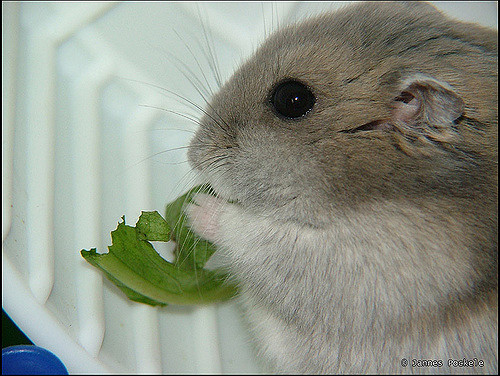

The Lifespan Of A Hamster
The different hamster species also have different lifespans. In general, hamsters don’t have long lives and you’ll be looking at around 2 happy years with your pet.
That’s still plenty of time to create a bond with the animal and not having such a long-term commitment with your pet can be beneficial for some people. Here are the average lifespans:
Campbell’s dwarf hamster = 2 year lifespan
Winter White dwarf hamster = 2 year lifespan
Roborovski dwarf hamster = 3 year lifespan
Chinese hamster = 2-3 year lifespan
Syrian hamster (for reference) = 2 year lifespan
The Guinness World Records state that the oldest hamster that ever lived was 4.5 years old! Some hamsters will live longer than the averages above, it really depends on their health and lifestyle.
The good thing is that you can help your hamster have the longest life possible! If you provide a balanced diet, clean environment and comfortable cage, your pet is bound to have a longer and happier life.
Preparing For Your Dwarf Hamster - Hamster Supplies Checklist
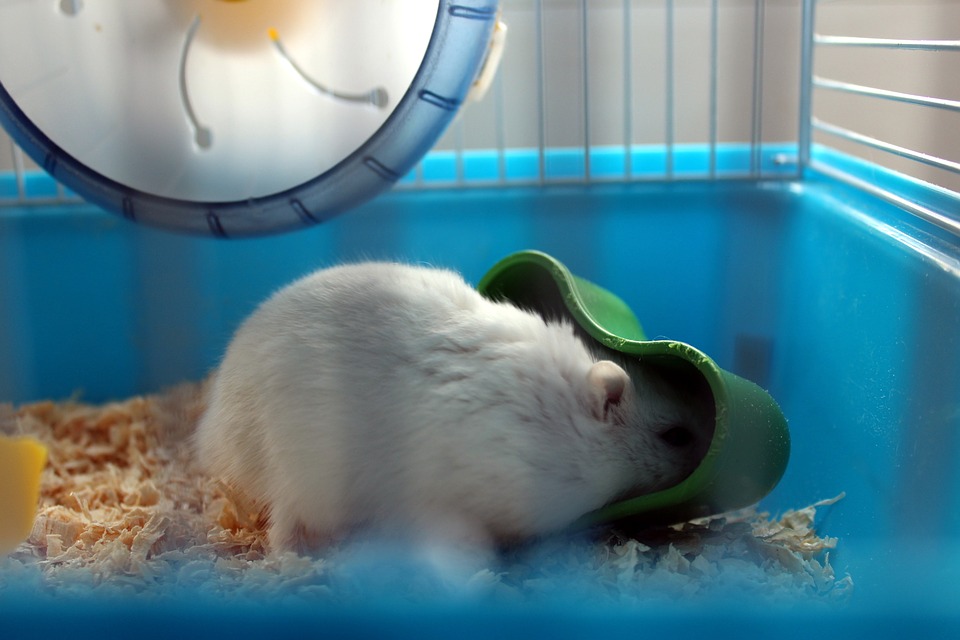
Before bringing your hamster home, it’s important to make sure you have all the supplies you need to provide a safe and healthy environment. Here’s a handy checklist:
- Suitable hamster cage
- Suitable bedding and substrate material
- Hamster nesting area (hamster homes)
- Food bowl
- Water bottle
- Toys for enrichment (climbing frames, tunnels, wheels, etc.)
- Hamster ball(s)
- Dwarf hamster foods and treats
- Non-toxic cleaning products
Estimated Cost = $80/£65
Tips For Choosing Your Dwarf Hamster
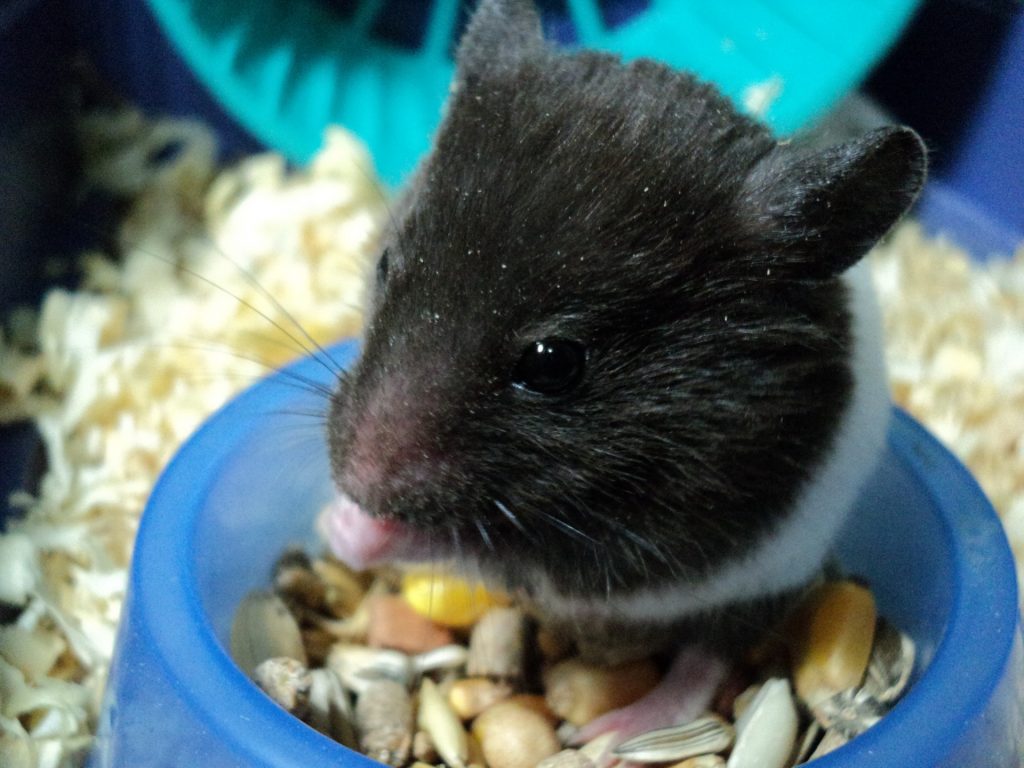
Wondering how to choose a dwarf hamster once you’re at the pet shop? Before you visit your nearest pet store, it’s important that you already have everything from the checklist above, so you can keep a dwarf hamster safely. Remember not to rush into anything!
It’s also important to have done your research, choosing a breed that suits your lifestyle. Each hamster breed requires a different amount of space, have different temperaments and need different foods/toys.
Here are some steps to take once you’re ready to pick up your pet!
Pet Shop Or Hamster Breeder?
Sometimes smaller pet stores can be a better option than big chains as they often spend more time with the animals. That’s not to say you can’t find a good store that’s part of a large chain – just be sure to do your research.
Observe The Cages & Habitat
Be sure to take a close look at the conditions the hamsters are being kept in. Do the cages look clean, well kept and not overstocked? A dwarf hamster living in a poor habitat is likely to develop health issues and should be avoided.
If you find a hamster living in an unhealthy habitat, it can be tempting to try and ‘save him’ by bringing the pet home. This isn’t a good idea. Purchasing the dwarf hamster will just lead to the store buying more – putting even more animals at risk
Talk To Employees
Another good way to assess the quality of a pet store is to ask the employees some questions about the dwarf hamsters. A good pet store should know the breeds, age and diets of their hamsters. If they don’t have much knowledge to share, this should be a warning sign.
Ask To Handle
Not all pet stores will let you handle a dwarf hamster. However, it’s always worth asking because this can help you find out if the animal has been tamed correctly. If the hamster seems nervous or aggressive, this is a bad sign. A dwarf hamster should show interest and curiosity when being handled correctly.
Check Health & Age
As a final check, take a look at the dwarf hamster you’d like to purchase and check its health. He/she should be well fed (not overfed) and be active in its enclosure. You should also make sure there are no cuts or marks that could indicate fighting.
Check for clear eyes, good colouration, a happy temperament and no hair loss. Dwarf hamsters only live for around 2 years, finding a hamster that’s healthy will allow you to enjoy your pet for longer and create a true bond.
A note on hybrids:
Some pet stores will sell hybrid hamsters. An example of a hybrid would be the offspring of a male Campbell’s hamster and a female Winter White. These hamsters can be absolutely fine but some develop serious health problems. It’s a controversial topic and something to be aware of – a purebred dwarf hamster will always be your best bet.
Naming your dwarf hamster
Naming your pet hamster is a big decision! You want a memorable name that suits you pet’s personality. Luckily, we’ve come up with a list of hamster name ideas to help you out. Here are a few classics:
- Chip
- Dexter
- Dots
- Harry
- Pablo
- Rex
- Amber
- Brownie
- Buttercup
- Cookie
- Pearl
- Waffles
Creating A Home For Your Dwarf Hamster
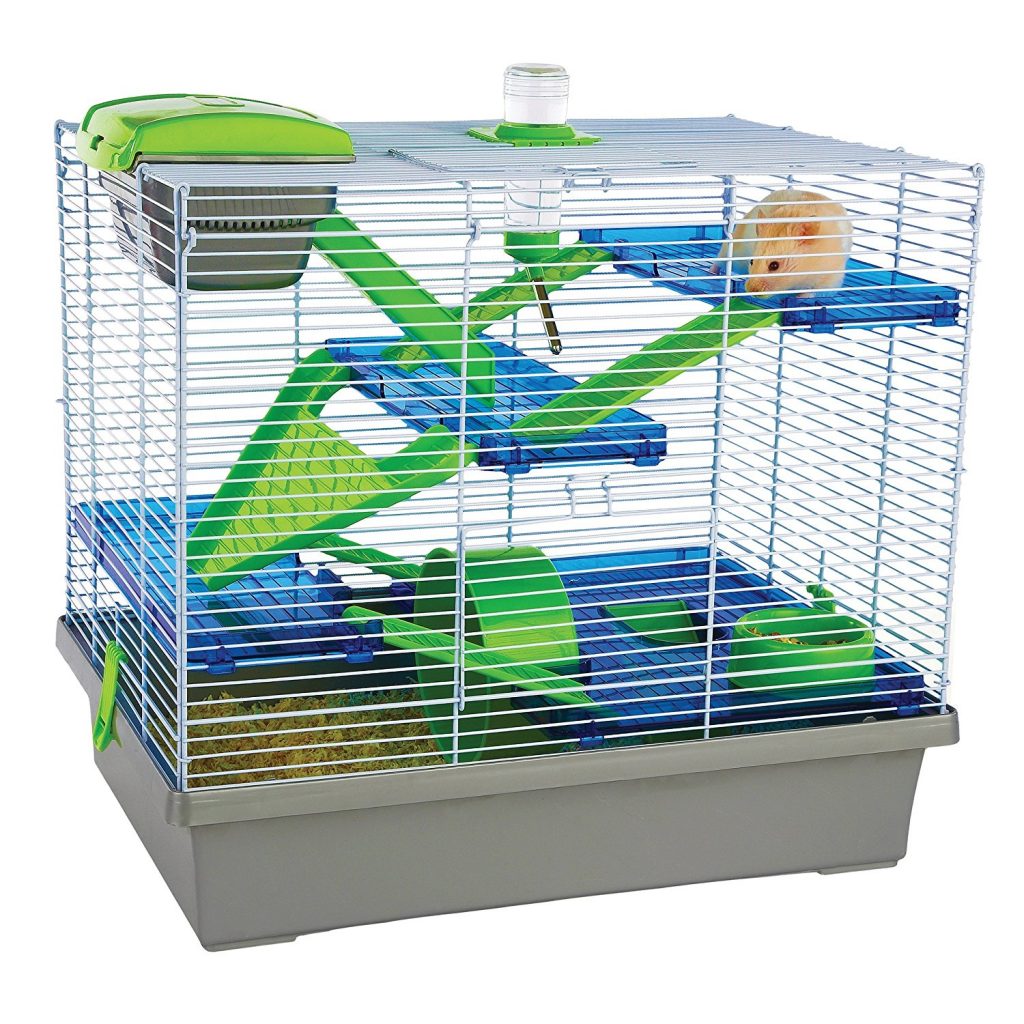
It’s important to create a home that your hamster feels comfortable in. Cage size is important, but you also need to provide plenty of toys and exercise opportunities to keep your pet busy – this is called enrichment.
Types Of Hamster Cage
There are a few different types of hamster cage and each have their own benefits. We’ve written a detailed post on the best hamster cages, but here is a quick overview.
Wire-Top Hamster Cages
These are the most common cages used to keep dwarf hamsters. Their popularity is thanks to ease of cleaning, durability and cost. Most wired cages will have multiple levels for your hamster to explore.
The downside:
Some wire-top cages aren’t suitable for dwarf hamsters as the bar spacing is too wide. Dwarf hamsters can fit through the smallest of spaces so be sure to pick up a cage that doesn’t have big gaps!
Glass Aquariums
More and more dwarf hamster owners are switching to aquariums thanks to their versatility. It’s a blank canvas, you can create the enclosure of your dreams with a bare tank! They are also much more escape-proof and allow you to watch your pet without the intrusion of metal bars.
The downside:
A new aquarium will take a hit on your wallet and cleaning out one of these tasks is a lot harder than your traditional wire-top cage.
Small Animal Habitats
These dwarf hamster cages are packed with toys and can provide lots of stimulation for your pet. These habitats are boredom killers, creating an interesting environment for your pet.
The downside:
Many hamster owners would argue that these cages are just to small (and they have a point). You’d probably need to combine a few of these enclosures to provide enough space for your dwarf hamster(s) to live comfortably and that will only increase costs.
Dwarf Hamster Cage Size
What’s the best cage size for a dwarf hamster? This is a question most new hamster owners ask and the truth is bigger is always better.
Remember, hamsters are curious animals and they like to explore. They also appreciate having their own space from time to time so that’s always something to consider. A larger cage like this will offer more possibilities for toys and exercise while housing multiple dwarf hamsters comfortably.
Setting Up Your Dwarf Hamster Cage
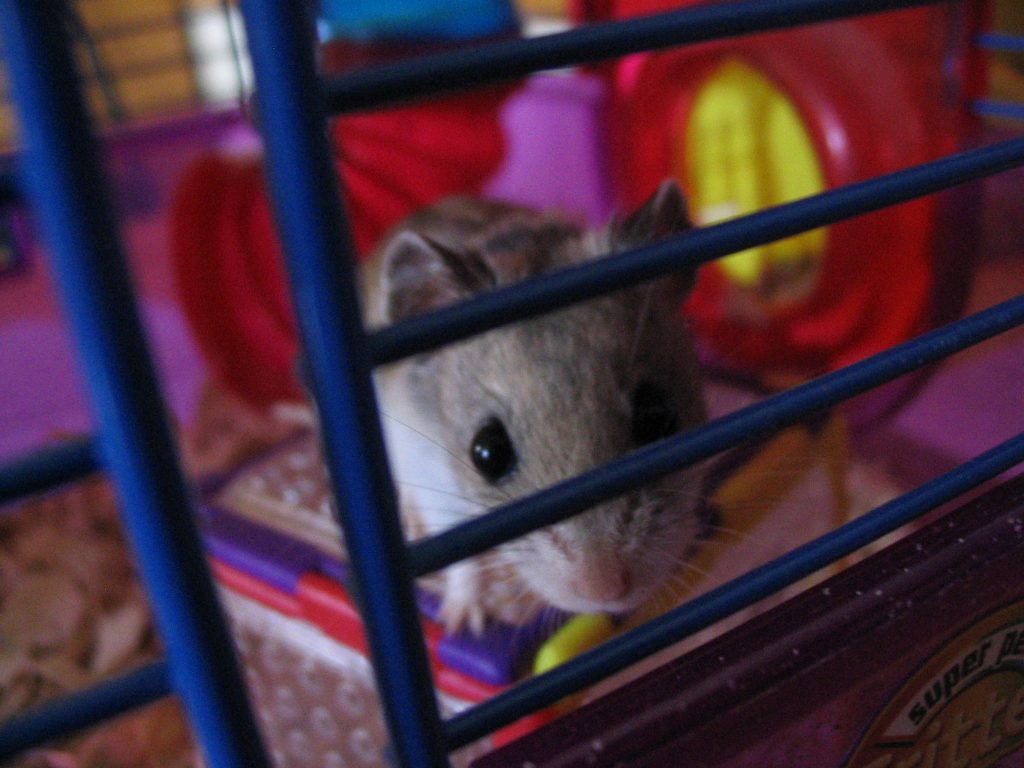
Setting up your hamster’s cage is pretty simple. Most cages will require some level of assembly but once put together, you’re good to go. Add hamster substrate/bedding first, be sure to use a safe and comfortable hamster bedding in your cage.
Then you can simply add toys, food bowls and any other accessories you’ve purchased for your new pet. Also set up your water dispenser so that it’s easily accessible for a dwarf hamster. It’s always worth placing the food bowl in an area where food won’t spill outside the cage and onto the floor, food time can get messy!
Tip: Placing two food bowls in your cage can help avoid aggression when keeping two or more dwarf hamsters together.
Where To Keep Your Hamster’s Cage
It’s always good to get a dwarf hamster accustomed to your voice and the various noises in your home. Your best bet would be to keep your hamster in a quiet area of your home and interact with your pet a little each day.
This will slowly build your hamster’s confidence and when he or she is ready, you can move the cage to a louder area of your home. Hamsters do have sensitive ears so try to avoid loud noises when possible.
Cleaning Your Hamster Cage
You’ll want to clean your dwarf hamster cage weekly. Regular cleaning keep your pet healthy and ensure a hygienic living environment is provided. Some cages can go up to two weeks without a big clean but this really depends on the size of your cage and how many hamster’s you own.
Weekly cleaning also gives you chance to interact with your dwarf hamster some more and provide it with some much needed exercise. If you need to go longer without performing a full clean you can keep hygiene up by spot cleaning. Simply replace any dirty bedding (usually the corners of the cage) and dirty cage accessories to maintain a healthy environment.
Choosing The Best Hamster Bedding

Choosing a good dwarf hamster bedding is essential for your pets happiness. Most hamster owners will opt for an inexpensive pack of wood shavings for their substrate coupled with a soft bedding material to go in their hamster’s sleeping area. This is definitely a good, low cost option.
Substrate = The material used on the bottom surface of your hamster enclosure to absorb waste.
Bedding = The material used for warmth and comfort in your hamster’s nesting area.
(these words of sometimes used interchangeably but this is the true meaning)
Some hamster owners still use sawdust in their cages. Don’t do this! Sawdust is a very dusty material and it can have a negative impact on your pets breathing and overall health. Aspen wood shavings are a much safer option.
There are also branded bedding materials available, the most popular being CareFresh. These are purpose made materials just for small pets. CareFresh is probably the best bedding material you can go for; it’s soft, extremely absorbent and largely dust-free. Just be aware that those benefits do come at a price.
We recommend using quality aspen wood shavings as your substrate and keep the more expensive materials like CareFresh for your hamster’s sleeping area. Always go for the best quality that you can afford.
Invest In Some Dwarf Hamster Toys
Enrichment is an important part of hamster keeping. You need to keep your dwarf hamster active and mentally engaged throughout his life. The best way to do this is by investing in some fun dwarf hamster toys!
Watching your dwarf hamster play with its toys is probably the best part of hamster keeping. Try and pick up some toys that keep your pet active such as climbing frames, burrowing nests and anything similar.
Here’s some of our favourite dwarf hamster toys:
- Exercise house
- Kaytee Critter Cruiser
- Hamster Assault Course
- Hamster Suspension Bridge
- Hamster Swing + Platform
- Hamster Maze
Of course, a good hamster wheel is very important too, more on that later.
Feeding Your Dwarf Hamster - Hamster Diet
Choosing the best dwarf hamster diet for your pet is extremely important. Dwarf hamsters are very prone to diabetes so low-sugar foods are the way to go.
In the wild, dwarf hamsters will regularly eat fruits, nuts, grains, seeds and insects. It’s best to try and recreate this diet as closely as possible. Purchase a good hamster food mix and some low sugar treats to keep your pet healthy and supplement fresh fruit/veg when possible.
- Nuts
- Seeds
- Grains
- Mealworms
- Grapes and Cherries
- Almonds
- Watermelons
- Chocolate
- Avocado
- High-Sugar Foods
While insects aren’t absolutely necessary for your hamster’s diet, it is the most natural food they could eat and a great source of protein. Consider treating your pet with the odd mealworm now and again – they’ll love it!
Dwarf Hamster Treats
As mentioned, dwarf hamsters are very vulnerable to diabetes so be careful with the amount of treats you provide.
Treats can be used as a means to reward your pet for good behaviour and speed up the taming process. Feel free to use a combination of insects, fresh fruit and your standard packaged treats. Here are some great dwarf hamster treats available online:
Keeping Your Dwarf Hamster Clean
You don’t need to wash your dwarf hamster or clean it in anyway. Hamsters can take care of themselves! The best thing you can do is provide a clean, healthy environment as well as good diet and exercise opportunities.
There is one thing you can do to help a dwarf hamster clean… buy a sand bath!
Sand Baths For Your Hamster
Sand baths are very small bath-like objects which contain pet-friendly bathing sand (purchased separately in shops). Lots of people provide their Chinchillas with a sand bath but hamsters love bathing too!
Your dwarf hamster will climb into the bath and spin around in the sand, cleaning its fur or dirt and other particles. It’s pretty fun to watch! A sand bath isn’t a necessity for your hamster but it can be a fun addition to your cage.
Taming A Dwarf Hamster

Taming and handling a dwarf hamster takes time.With the right care, your hamsters will become very tame and easy to handle. They key is to work with your hamster a little each day to successfully tame your pet.
It’s worth noting that Roborovski hamsters can be hard to handle due to their small size and agility. Taming a Robo definitely takes more time and is more suited to an experienced dwarf hamster keeper.
When your first bring your dwarf hamster to its new home, don’t try and handle it straight away. Give the animal time to settle into the new environment and regularly talk to your hamster so it becomes familiar with your voice. After a few days to a week, start offering treats to your hamster by hand and lightly stroke the animal when possible.
Once you’ve reached this stage, you can try this taming process:
- Place your hand flat of the surface of the hamster cage and allow your pet to explore – place a treat in the middle of your hand to encourage this
- Once familiar with your hand, gently scoop the dwarf hamster from underneath and lightly stroke him/her
- Now you can start lifting your hand into the air when the hamster is scooped – don’t rush this and slowly increase the height over a few days to build trust
- Now you can try picking up your dwarf hamster and holding him outside the cage!
- Always award treats whenever you have a successful taming session with your pet
Hamster Handling Tips
Don’t approach your hamster from above. Predators will often attach a hamster from above in the wild which is why they can become scared or flighty when you attempt this in captivity. Instead, scoop your dwarf hamster from underneath its body.
It goes without saying, but do not squeeze or drop a dwarf hamster from a height. Hamsters are fragile animals and tightly squeezing as you pick one up won’t do it any good (this can also cause biting). If you’re worried about dropping your dwarf hamster, simply hold him near ground level or over a soft landing area.
Always supervise children when they’re handling dwarf hamsters. Remember these are small animals and can’t be treated like a toy. Poor handling techniques will either scare a small hamster or cause it to feel threatened and therefore inflict a bite.
Don’t rush it. The taming process can take a week, or it could take a few months – it depends on the hamster! A little handling time each day is the best way to successfully tame your pet.
You might not be able to tame a Roborovski. Robos are very small and incredibly quick. That isn’t the best combination for handling! You may be better off with a different species of hamster if handling is one of your top priorities.
Exercising Your Hamster
Dwarf hamsters are playful creatures and they need exercise to stay healthy, just like us! The best way you can do this is by providing plenty of opportunities for exercise such as hamster wheels, climbing frames and a large cage for exploration.
It’s also good place your dwarf hamster into a hamster ball regularly. This will allow your pet to explore your whole home without being able to escape. Just keep it away from the stairs!
Hamster Wheels
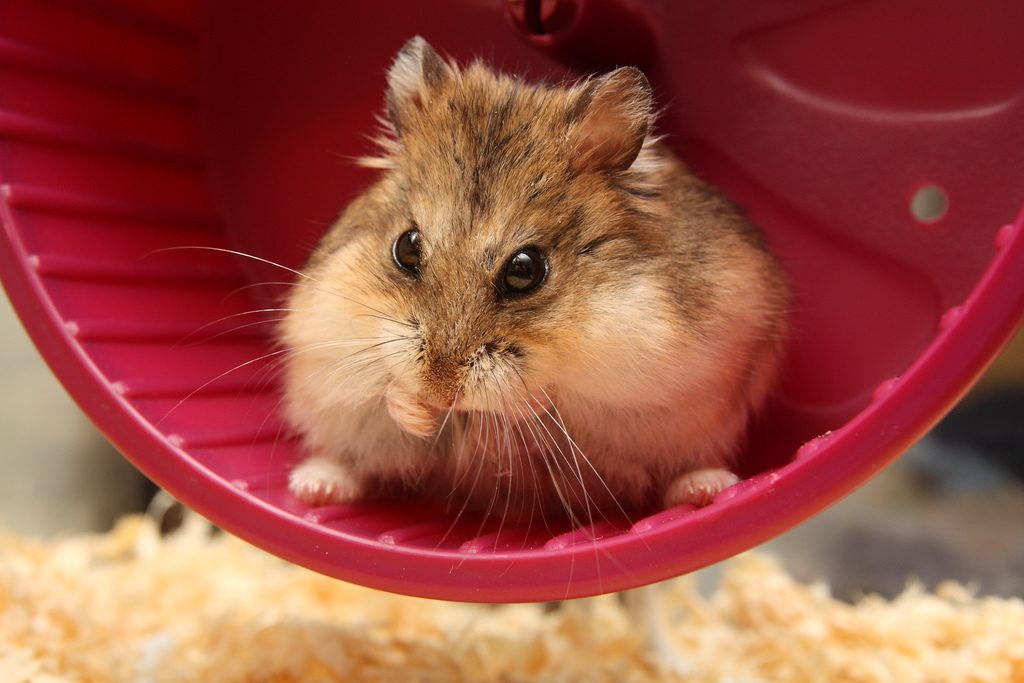
There are so many hamster wheels available in your local pet store sometimes it can be hard to choose one! Try and pick a hamster wheel that’s a good size for your pet and preferably one that doesn’t squeak! The Silent Runner is probably your best bet.
Common Hamster Health Problems
Hamsters are generally hardy animals which is what makes them a fantastic first pet. However, there are a few health problems that you need to watch out for. Here is some useful info.
Wet Tail
Wet tail is a serious condition that can prove fatal if left untreated. The condition is very similar to standard diarrhoea which means it can be easily missed. The actual disease is found in the lower intestine.
Wet tail is extremely contagious and an infected hamster should be isolated immediately. Replace any surfaces the infected may have touched and see the vet as soon as possible. The condition can come in quickly and the symptoms are unkempt coats, loss of appetite and diarrhoea.
Luckily this condition can be treated and it doesn’t occur all that often. The best preventative measure is to always buy your dwarf hamsters from reputable breeders and maintain a good clean environment for your pet to live in.
Diabetes
Dwarf hamster diabetes is a more common issue and is almost always caused my a high sugar intake. If you feed treats sparingly and provide a balanced diet, diabetes is unlikely to be an issue.
The main symptoms are weight loss, thirst, urination and sometimes cataracts. Dehydration could be a potential issue too. You can usually treat a diabetic hamster by simply improving its diet. Stay away from all sugars and find a healthy food mix. A vet can be contacted if the problem does continue.
Hair Loss
Hair loss is a health issue many people come across and there are many causes. Sometime bald spots develop from a hamster frequently rubbing against its cage or rough cage accessories.
Hair loss can also occur when the hamster’s fur is being chewed on by other hamsters. If you do start noticing bald spots, research the condition online and consider a trip to the vets.
Skin Diseases
Ringworm is a common skin disease in dwarf hamsters but problems can also develop from other allergies. Certain types of sawdust and bedding can often cause these problems, particularly cedar shavings or sawdust. Change up your bedding material if you start noticing any skin issues with your dwarf hamster.
Teeth Problems
A dwarf hamster’s teeth will continuously grow which is why chewing materials are needed. Without proper care, a hamster’s teeth may grow straight through the roof of its mouth which can cause larger problems.
The best thing you can do is provide a chew toy which will allow your dwarf hamster to grind its teeth down as they grow – this will help avoid common dental problems.
Good dwarf hamster care will definitely help you avoid the majority of these health problems. Hopefully you won’t ever need to deal with a hamster health issue but it’s always good to be aware of potential problems.
That’s everything! We really hope you found our dwarf hamster care guide useful. Feel free to bookmark and refer to this article whenever you need to. Dwarf hamster keeping is a fun hobby and they make incredible little pets. Enjoy being a successful hamster keeper!
